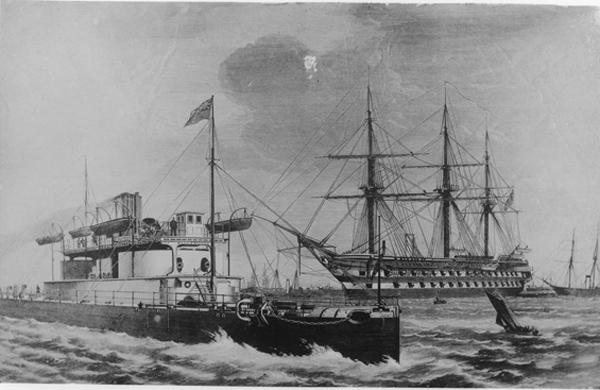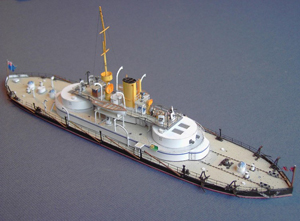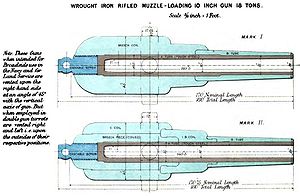The Monitor brings back memories of the pivotal ship battle of the American Civil War, that between the Monitor and the Merrimac. Both advanced ironclad vessels of their time, the battle came to a draw, but ship design would never be the same again. Till just before the 20th Century dawned, the monitor class ship referred to small craft with an unusual attribute, the turret.


During the 1880's, the British Navy adapted the turret to this new class of warship, but different from the American version of the Civil War. Their idea was to use the turret on a shallow draft vessel the aim of which was to put some huge guns on it and pound the hell out of someone's shore installations. Command of the oceans and the seas of the world is how you got to be top dog in 1880. And the British believed to a man that whoever had the biggest guns was inevitably the winner. And these were big guns we're talking about here. The British hung some of the biggest guns ever on these new ships.

H.M.V.S Cerberus was a monitor built in 1868 in England to defend the Australian colony of Victoria, and is still visible to this day there, doing it's duty as a breakwater in Half Moon Bay. It carried 10 inch muzzle loading guns and was truly Steampunk, as this was the first British warship to do without sails, depending on her huge steam engine, complete with 5 boilers and 13 furnaces. Her crew totalled 96 including officers. It was a peach to get to Austrailia, with the low freeboard common to monitor class ships and her appetite for coal, but she finally got there in 1871.

She carried 10 inch muzzle loading rifled guns that fired 400 lb. shells. These were set in huge soupcan turrets made of East India teak and covered with 10 inches of armor plating! The turrets were turned by small steam engines fed by the main boilers. This ship was a feast of brass, iron, steel and wood. The magazine was fitted with lots of brass, doors and such, as you don't need too many sparks with huge loads of black powder. And there was a telegraph to the magazine to order up shot and shell for the day. I'd give anything to roam through this ship in it's day.
Brits had gone back to muzzleloaders as their early experiments with the new breech loaders were not satisfactory. The 10 inch "Woolwich" guns were a long time evolutionary development of earlier muzzle loading guns. They were economical to make owing to their construction of wrought iron sleeves shrunk over a steel core. 
Their main shell was the Palliser shell, to be used for it's armor piercing capability. It took 70 lbs of black powder to launch this beast, and it was effective in it's day. There was a small charge of gunpowder in the shell to explode on contact, but the Brits thought this unnecessary in the end and left it out, opting to just punch holes in things.
They had lots of other interesting guns on board this boat. Snider rifles, Nordenfelt machine guns and some Maxim guns. Some odd weapons were listed in the specifications also. Shot, shell, muskets, pistols, and cutlasses and tomahawks!! This ship was where the battleships of the 20th Century were to evolve from. It was easily the most powerful ship in Australian waters. The later Lord Clive class monitors were to pack huge 15 inch guns, and were still used in WW2! Monitors had come a long way from it's original nickname, the "cheese box on a raft"!
links:
Friends of Cerberus video page

